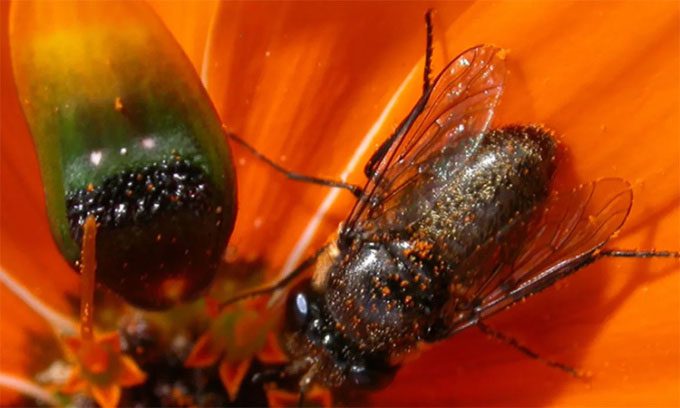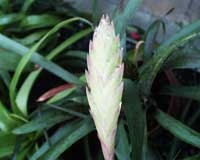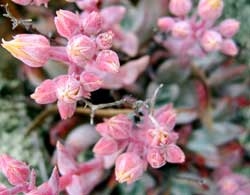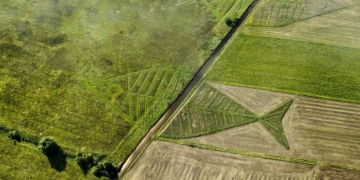Scientists Decode the Mysterious Mechanism Helping South African Daisy Species Create Fake Female Flies on Petals to Attract Males for Pollination.
The only daisy species that produces 3D fake female flies to lure male flies for pollination is Gorteria diffusa, found in South Africa. For decades, scientists have been captivated by the mechanism behind this impressive fake fly. It even features realistic hair patches and prominent white spots. In a study published in the journal Current Biology on March 23, a team of experts discovered three gene groups involved in creating the fake flies on daisy petals.

Male flies approaching the fake female on daisy petals. (Photo: Roman Kellenberger/Cambridge University).
According to the researchers, the most surprising aspect is that each of the three gene groups serves different purposes for the plant. For instance, one group regulates flowering time, while the other two manage iron circulation and produce root hairs. However, the three gene groups combine in a completely novel way to create the fake female flies.
The iron-circulating genes alter the flower petal’s pigment from its natural reddish-purple to a more fly-like green by adding iron. The genes responsible for root hairs cause the petals to grow extra hairs. The placement of the fake flies on the petals is determined by the third gene group.
“This daisy species does not develop a new gene to create the fake fly. Instead, they perform an even smarter feat by assembling existing genes, which are already performing different functions in various parts of the plant, to create a complex structure on the petals that deceives male flies,” said Professor Beverley Glover from the Department of Plant Sciences at Cambridge University, a co-author of the study.
The petals provide an evolutionary advantage to this daisy by attracting more male flies for pollination. In South Africa, plants live in harsh desert environments and have only a brief rainy season to flower, pollinate, and disperse seeds before dying. Consequently, they compete fiercely to attract pollinators, and the Gorteria diffusa daisy stands out by creating fake female flies.
This daisy belongs to a relatively young evolutionary group compared to most other organisms, having emerged only 1.5 to 2 million years ago. Researchers believe that the absence of fake flies in the earliest members of this plant group indicates how quickly Gorteria diffusa evolved to develop its fake flies.
“This is akin to developing a completely new organ in a very short time. Male flies do not linger long on flowers with simple reproductive structures, but they are so attracted to these fake flies that they spend additional time attempting to mate, transporting more pollen and aiding in the plant’s pollination,” explained Dr. Roman Kellenberger, another co-author of the study.





















































